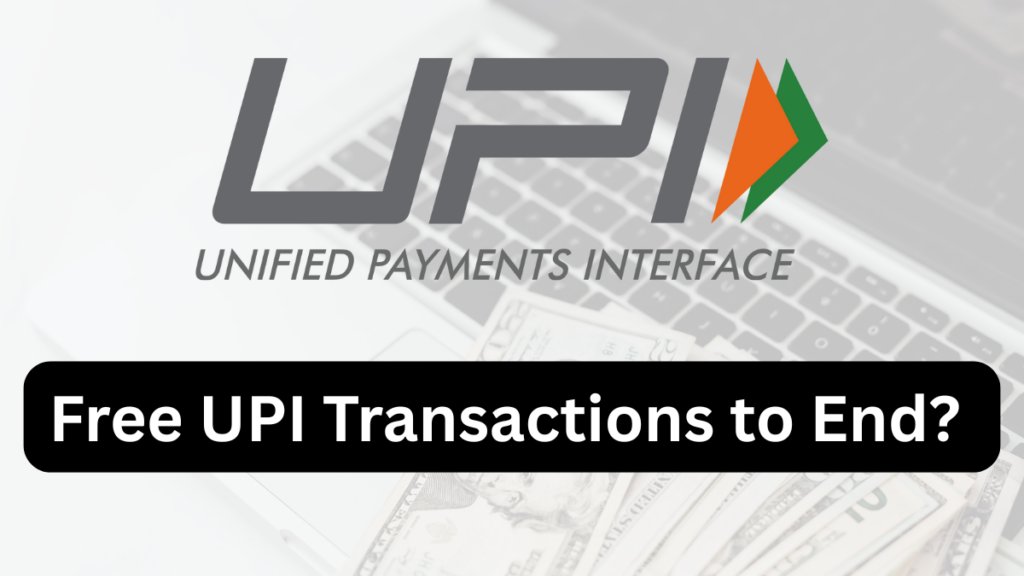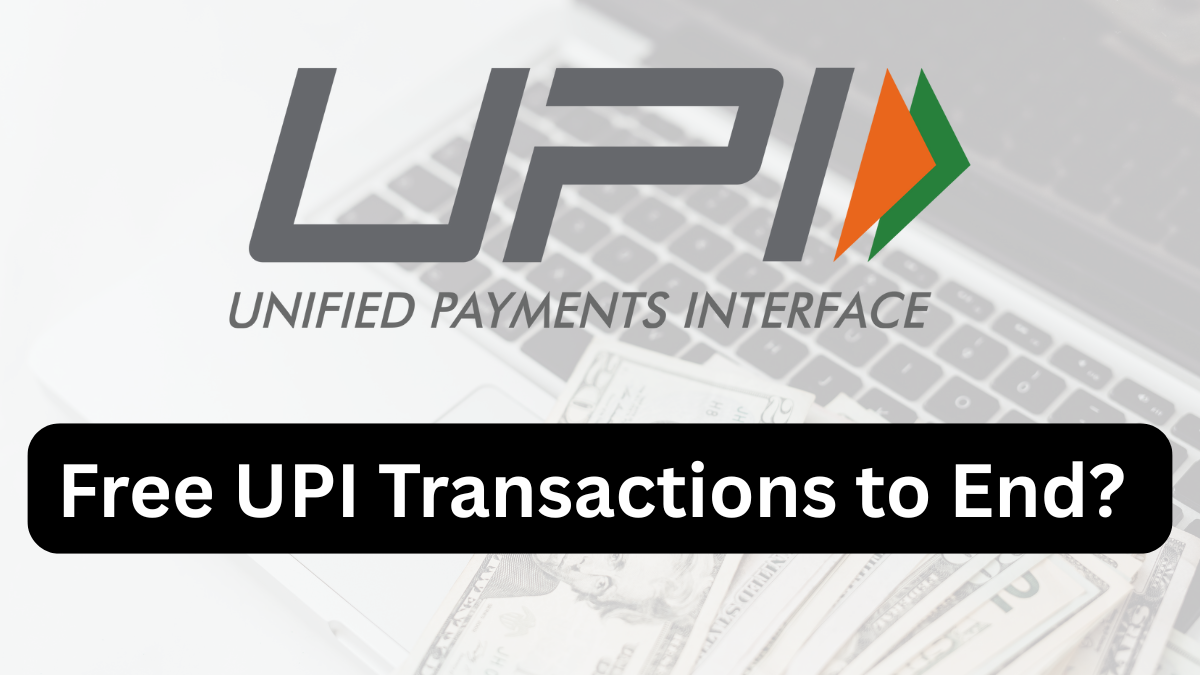India’s journey toward a cashless society has been significantly driven by the success of Unified Payments Interface (UPI). This system has revolutionized digital transactions, enabling instant money transfers, widespread accessibility, and zero transaction costs. However, recent discussions about reinstating the Merchant Discount Rate (MDR) on UPI transactions have sparked debates across industries. If reintroduced, the MDR could substantially alter how UPI is used in the future.
This article explores the potential effects of MDR on UPI transactions, the rationale behind its reintroduction, and the broader implications for businesses, consumers, and India’s growing digital payments landscape.

What is UPI?
Unified Payments Interface (UPI) is a groundbreaking real-time payment system developed by the National Payments Corporation of India (NPCI). It allows users to transfer funds between bank accounts instantly through a single mobile application, simplifying the payment process and making it more efficient.
UPI has been a key enabler of digital payments in India, offering consumers and businesses an easy, cost-effective alternative to traditional methods like cash or cheques. As of early 2025, UPI has become the most popular form of digital payment in India, with billions of transactions processed every month.
Key Features of UPI: The Backbone of Digital Payments
UPI has earned its reputation as a reliable and user-friendly system thanks to several key features:
-
Real-Time Money Transfers: With UPI, funds are transferred instantly, making it ideal for both personal and business transactions.
-
Zero Transaction Fees: Currently, UPI transactions are completely free for both consumers and merchants, making it an attractive option for everyday transactions.
-
Widespread Integration: UPI is integrated into a wide range of payment platforms, including popular mobile apps like Google Pay, PhonePe, Paytm, and various banking apps, enhancing its accessibility.
-
High Security Standards: UPI uses two-factor authentication (2FA), making it a highly secure platform for financial transactions.
-
Interoperability: UPI allows users to link multiple bank accounts to a single platform, offering a seamless experience without the need to juggle different banking apps.
In February 2025, UPI processed a staggering 16 billion transactions, amounting to ₹22 lakh crore, underscoring its vital role in India’s financial ecosystem.
The Rise of UPI’s Zero-MDR System
Before 2020, UPI transactions were subject to a fee structure known as the Merchant Discount Rate (MDR), which merchants had to pay to banks or payment service providers for processing digital payments. The fee was a small percentage of the total transaction value, typically ranging from 0.5% to 1%.
However, the government made a strategic decision to waive these MDR charges for UPI and RuPay debit card transactions starting January 1, 2020. The decision aimed to promote cashless transactions, increase the adoption of UPI, and encourage financial inclusion.
How UPI Became a Zero-MDR System?
In December 2019, Finance Minister Nirmala Sitharaman announced the removal of MDR charges on UPI transactions, effective January 2020. The goal was to drive the adoption of digital payments and further the government’s vision of a cashless economy. Prior to this, businesses using UPI were required to pay MDR fees on every digital payment made, even if the amounts were relatively small.
With the implementation of the zero-MDR system, UPI became a major player in transforming how India handles digital transactions. To compensate banks and payment service providers for the absence of MDR fees, the government introduced financial incentives, which covered the cost of maintaining the infrastructure necessary for UPI’s operation.
However, the subsidy provided by the government has been shrinking in recent years. This reduction in funding, combined with the increasing volume of digital transactions, has led to calls for the reintroduction of MDR fees.
Understanding MDR (Merchant Discount Rate)
The Merchant Discount Rate (MDR) refers to a fee that merchants pay to banks or payment service providers for processing digital payments, such as card transactions or UPI payments.
MDR Before 2020 and Now
| Payment Method | MDR Rate (Before 2020) | Current MDR Rate |
|---|---|---|
| Credit Cards | 1% – 3% | 1% – 3% |
| Debit Cards | 0.5% – 1% | 0.5% – 1% |
| UPI Transactions | <1% | 0% |
| RuPay Debit Cards | <1% | 0% |
For example, if a customer uses a credit card to pay ₹5,000 at a shop with an MDR fee of 2%, the merchant would be charged ₹100. In contrast, UPI transactions currently incur no such fees, making it an attractive choice for merchants.
Why the Push for MDR on UPI Transactions?
The debate over the reintroduction of MDR fees centers around the financial sustainability of the digital payments ecosystem. Several factors have contributed to the growing calls for MDR on UPI transactions:
Key Reasons for MDR Reintroduction
-
Declining Government Subsidies: In FY24, the Indian government allocated ₹3,500 crore to subsidize the cost of zero-MDR fees. However, this budget was slashed to ₹1,500 crore in FY25, which only covers a fraction of the ₹10,000 crore needed annually to maintain UPI services.
-
Sustainability of the Payment Infrastructure: Maintaining and scaling the infrastructure required for billions of transactions each month demands significant investment in cybersecurity, fraud prevention, compliance, and merchant onboarding. Without a steady stream of revenue from MDR fees, payment providers struggle to ensure the long-term stability of UPI.
-
Creating a Level Playing Field: Unlike other payment methods, such as credit cards or mobile wallets, UPI does not generate revenue for payment providers. Introducing a small MDR fee (estimated at 0.3%) would create a more balanced environment where all payment systems contribute to the infrastructure’s growth.
What Will Happen If MDR Is Reintroduced?
If MDR fees are reintroduced, several stakeholders—merchants, consumers, and digital payment providers—will feel the impact. Let’s explore the potential outcomes for each group.
Impact on Merchants
-
Increased Costs: Merchants who have enjoyed fee-free UPI transactions will now have to factor in MDR fees, which could reduce their profit margins.
-
Price Adjustments: In response, many businesses may increase their product prices or introduce additional charges for digital payments to cover MDR costs.
-
Shift to Cash Payments: To avoid the MDR fees, some merchants might encourage customers to use cash, which could slow down India’s progress toward complete digitalization.
Impact on Consumers
-
Higher Prices: Consumers might face higher prices for goods and services as businesses pass on the costs of MDR fees.
-
Limited Payment Options: Some businesses might stop accepting UPI payments if MDR fees are introduced, reducing consumer choice when making payments.
Impact on Digital Payment Providers
-
Financial Sustainability: Reintroducing MDR fees would generate much-needed revenue for banks, fintech companies, and payment service providers, allowing them to maintain and expand their services.
-
Enhanced User Experience: With a stable revenue stream, digital payment providers can invest in enhancing their services, improving customer support, and increasing security features.
FAQs
1. Why did UPI transactions become free in the first place?
UPI transactions were made free to encourage their adoption by consumers and merchants and to help boost India’s digital payments ecosystem. The government provided subsidies to cover the processing costs, which allowed for the zero-MDR model.
2. How would the reintroduction of MDR affect small businesses?
Small businesses may face higher operational costs due to MDR fees. Many of these businesses could raise prices or impose additional charges on customers who choose to pay digitally.
3. Will consumers have to pay MDR fees?
Consumers are unlikely to pay MDR fees. However, businesses may increase the prices of goods or services to offset the cost of MDR charges, indirectly passing the burden to the consumer.
4. How can payment providers benefit from MDR fees?
Payment service providers can use MDR fees to generate a stable income stream, enabling them to invest in better infrastructure, security features, and customer support, all of which improve the user experience.
Conclusion:
The reintroduction of MDR fees is a complex issue with implications for the entire digital payments ecosystem. While MDR fees could provide a much-needed revenue source to sustain UPI infrastructure, they also carry the risk of discouraging both merchants and consumers from embracing digital payments. As India continues its journey towards greater financial inclusion and a cashless economy, it remains to be seen how policymakers will strike a balance between sustainability and affordability for all stakeholders involved.
The decision to reintroduce MDR fees will undoubtedly shape the future of digital payments in India, influencing everything from the way businesses process transactions to how consumers make payments. Stay tuned for more developments as this important debate continues.
Click here to learn more
Sachin is an experienced writer with a strong background in education-related content. With years of expertise in creating informative and engaging material, he covers topics such as teaching strategies, educational technology, and learning methodologies. His work aims to inspire both educators and learners, reflecting his deep understanding of the evolving education landscape.

